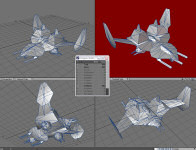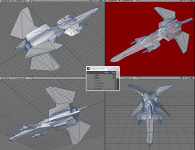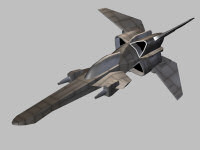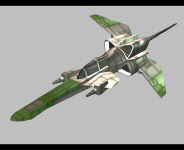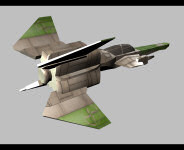ChrisReid
Super Soaker Collector / Administrator
Halman recently challenged BradMick to create low polygon models of Wing Commander 2 ships to test their feasibility in the Wing Commander 3 engine. The attempt was successful. Both the large Broadsword and tiny Ferret were trimmed down below WC3's 500 poly limit while retaining their distinctive shapes and styles. The first two shots demonstrate this polygon mastery. The textured Ferrets are from a similar 986 triangle experiment that produced pretty results too. These are a very impressive leap over BradMick's first Ferret almost five years ago (pictured last).
Also as of last week, Brad is officially a US Army Warrant Officer Candidate. He'll soon be shipping off to basic training, then proceeding on to WOC and flight school. Congratulations!
--
Original update published on November 13, 2005
Also as of last week, Brad is officially a US Army Warrant Officer Candidate. He'll soon be shipping off to basic training, then proceeding on to WOC and flight school. Congratulations!
--
Original update published on November 13, 2005
Last edited by a moderator:

